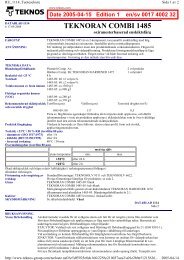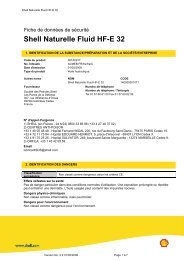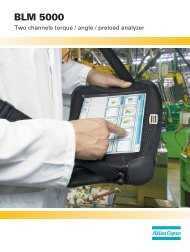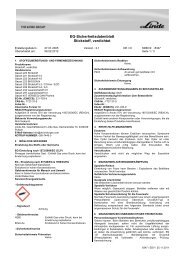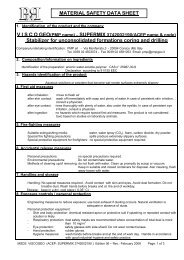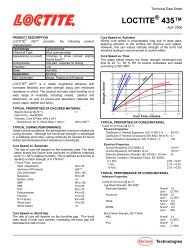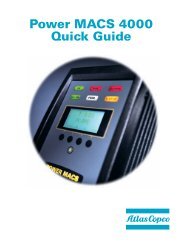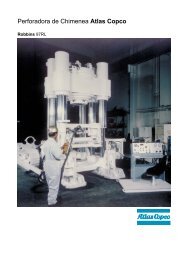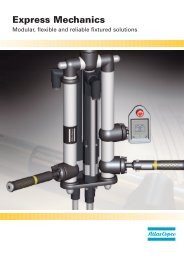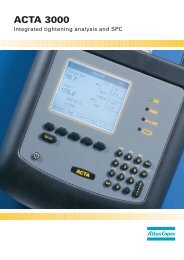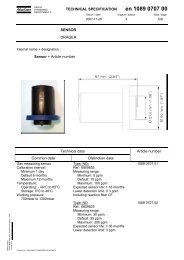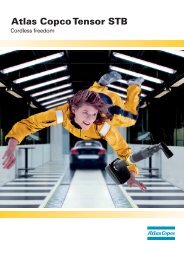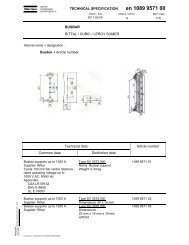Ergonomics - Atlas Copco
Ergonomics - Atlas Copco
Ergonomics - Atlas Copco
You also want an ePaper? Increase the reach of your titles
YUMPU automatically turns print PDFs into web optimized ePapers that Google loves.
144<br />
SHOCK REACTION<br />
There are no shock reactions when this tool<br />
is used. Thus, shock reaction does not apply<br />
for chipping hammers.<br />
VIBRATION<br />
The design of this tool includes an isolation<br />
system in the handle. It is a mass spring<br />
system, with a preloaded spring, the mass<br />
being the handle itself. The preloaded spring<br />
causes the isolation system to take effect<br />
from a certain minimum feed force, up to<br />
a maximum feed force when the spring is<br />
bottoming. A preloaded spring is needed<br />
because the stiffness (k factor) of the spring<br />
must be low in order to achieve a low natural<br />
frequency of the system.<br />
The declared vibration value is 3.5 m/s 2<br />
and the correction factor, to get an estimated<br />
vibration value for chipping hammers used<br />
in a cleaning operation, is 2. Using the daily<br />
exposure time of two hours, the estimated<br />
vibration exposure will be<br />
A (8) = (2/8) 1/2 • 3.5 • 2 = 3.5 m/s 2<br />
This represents a score of 31.<br />
NOISE<br />
The measured and declared level is 94<br />
dB(A). The continued equivalent<br />
noise level for eight hours exposure is:<br />
L eq(8) = 10 log (1/8 • 10 9.4 • 2) = 88 dB(A)<br />
The score is thus 28. This value does not<br />
include process noise which can be much<br />
higher, as indicated in the diagram. The<br />
process noise is unique and depends on the<br />
characteristics of the casting being cleaned,<br />
the operator’s technique and the design of<br />
the workstation.<br />
DUST AND OIL<br />
The chipping hammer is often used in a very<br />
dusty environment. The work involves cleaning<br />
cavities containing sand and burn deposits on<br />
the surface of the casting. A dust collector fitted<br />
to the tool interferes with the work. Therefore a<br />
well ventilated fettling booth is the best solu-<br />
tion. The overall stressor evaluation for dust is<br />
0-20 depending on the quality of the ventilation<br />
system.<br />
These tools are provided with a small<br />
amount of oil. The concentration of oil mist in<br />
the breathing zone is less than 5 mg/m 3 .<br />
From Table 3.15 a score of 4+2 can be<br />
found if the working pace is assumed to be low.<br />
The total score for dust and oil will then be 6.<br />
This score is only valid when the ventilation<br />
system at the workplace is of average quality or<br />
better.



